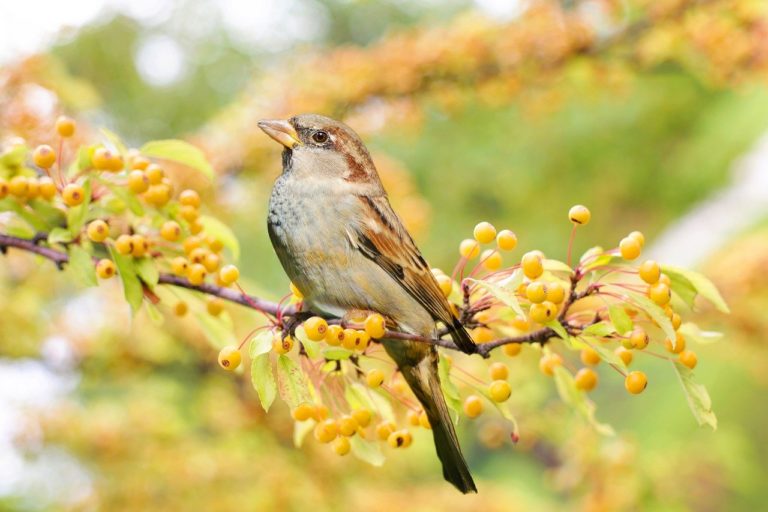Before you tackle those strenuous fall chores around your yard, consider the needs of your wild neighbors. While much of the falling debris is unsightly, fallen leaves and branches or withered flowers and plants can be an excellent source of winter food and shelter for birds and animals. In fact, by harnessing the fall changes, you can roll out the wildlife welcome mat and create a backyard winter refuge to be enjoyed by bird, animal, and human alike.
Most people continually trim back bushes, weed gardens, and pick dead flowers throughout the summer. This ensures plants always look their best and also encourages new growth. But fall is the perfect time to let nature take its course with flower beds, gardens, and shrubs.
As flowers mature, they produce seeds on which a variety of wild birds and animals can feast. Similarly, the dead, dry stalks of many plants create both winter shelter and a stockpile of natural nest materials for birds to use during next year’s spring.
Generally, fall is when we rake away the thick blanket of tree leaves and needles that cover the ground. But nature may be best suited if you relinquish the rake. Fallen leaves and piled brush or branches make excellent winter ground cover for a variety of wild birds, animals, and insects. In addition, dead or dying trees can also serve your backyard sanctuary well, as long as they are not a safety hazard.
Hollow trees can create an excellent roost for cavity dwelling birds like woodpeckers, while the decayed wood may hide a smorgasbord of insects and grubs. Edible mushrooms, moss, and lichens usually also grow on the bark of dead trees and offer additional food and nest materials throughout the winter.
However you harness the changes of fall, bird feeders stocked with a variety of high-quality seeds make the perfect complement to a natural supply of food and nesting materials. As birds migrate, molt, and prepare for the coming cold, they need a lot of energy.
In fact, on a cold winter night, a bird may lose up to fifteen percent of his body weight just trying to keep warm. It is never too early to offer high-energy foods, such as a tube feeder stocked full of black oil sunflower seeds or a hanging feeder filled with scrumptious suet. Many birds begin their winter food forages as early as late summer.
By catering to their needs as soon as possible, you are sure to have an active bird feeder all winter long.
Fall is a time of great natural change. However, oftentimes the most extensive backyard transformations are created by human hands. By slightly altering your autumn routine, however, you can create a backyard haven rich with natural food and shelter. Offer some high-energy food sources into the mix and your backyard will flourish with wild birds, animals, and activity, making for a truly wonderful winter.
Image source: pixabay.com

